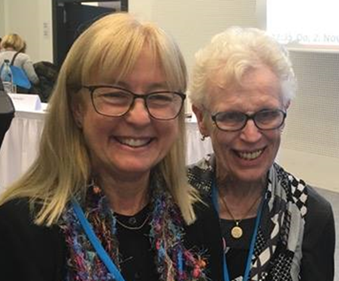Search
Research
Randomised Controlled Trial of a Therapeutic Playgroup for Children with Developmental DelaysA single-blind randomised control trial investigated the effectiveness of the Learn, Engage and Play (LEaP) playgroup. Seventy-one children with developmental delay were randomly allocated to an 8-week LEaP playgroup or control group and followed up at 12 and 28 weeks.
Research
Oral parafunction and bruxism in Rett syndrome and associated factors: An observational studyTo explore patterns of parafunction, and bruxism, and its relationships with genotype and snoring in individuals with Rett syndrome.
Research
Kindy Moves: a protocol for establishing the feasibility of an activity-based intervention on goal attainment and motor capacity delivered within an interdisciplinary framework for preschool aged children with cerebral palsyPreschool aged children with cerebral palsy (CP) and like conditions are at risk of performing below their peers in key skill areas of school readiness. Kindy Moves was developed to support school readiness in preschool aged children with CP and like conditions that are dependent on physical assistance and equipment throughout the day. The primary aims are to determine the feasibility of motor-based interventions that are functional and goal directed, adequately dosed and embedded into a play environment with interdisciplinary support to optimise goal-driven outcomes.
Research
The Power of Playgroups: Key components of supported and therapeutic playgroups from the perspective of parentsPlaygroups are community-based programs for children and families aiming to improve child outcomes, enhance family and community networks and increase parenting capacity. Despite the prevalence of playgroups in Australian communities there is a lack of research clearly articulating the key components of playgroups, specifically from the perspective of parents attending these groups.
Research
The Neurological Hand Deformity Classification: Construct validity, test-retest, and inter-rater reliabilityThe Neurological Hand Deformity Classification (NHDC) is an impairment-based tool that classifies hand deformity into one of two ordinal scales: flexion or extension deformities. Classification is made from live observation or from recorded video footage. Differentiation between the levels is determined by wrist position and wrist and finger movement.
Research
Parents' experiences of children with a rare disease attending a mainstream school: AustraliaTo explore the perceptions of parents who had a child or adolescent (6-18 years) diagnosed with a rare disease who attended a mainstream school in Western Australia. Design and methods: A cross-sectional online survey was conducted with 41 parents of children with a rare disease.
Research
Association between disability status and dental attendance patterns in Australian children: A national surveyThis study investigated the dental attendance patterns of Australian children with and without disabilities using data from Growing up in Australia: The Longitudinal Study of Australian Children.

News & Events
The Kids researchers who helped identify rare disorder now poised to help the hunt for treatmentTwo The Kids Research Institute Australia researchers recognised for their role in building a global database for CDKL5 deficiency disorder are now helping to set the scene for clinical trials of much-needed potential treatments.
Research
Online Health Literacy Resources for People With Intellectual Disability: A Grey Literature Scoping ReviewPeople with intellectual disability experience higher rates of physical and mental health problems than those without intellectual disability. Health literacy includes accessing, understanding, appraising and applying health information. Improving health literacy is associated with better health outcomes. The internet is a primary source of health information for many people. This study aimed to evaluate available online health resources for people with intellectual disability and their families to understand information gaps.
Research
Intrafamilial Maltreatment of People with Intellectual Disability: A Scoping ReviewPeople with intellectual disability experience a greater risk of maltreatment than people without intellectual disability. Maltreatment by family members presents additional risks, including greater possibilities for concealment. This scoping reviewResults were summarized in both narrative and tabular formats summarizes extant knowledge about the familial maltreatment of people with intellectual disability and identifies gaps in the literature.
